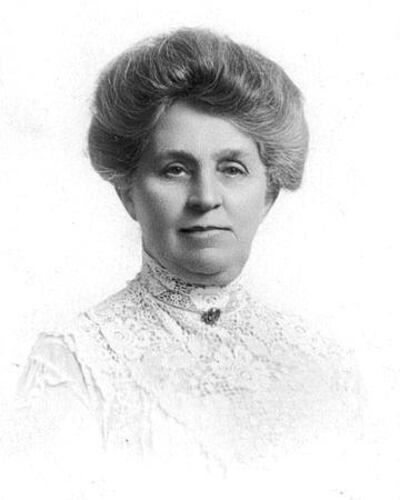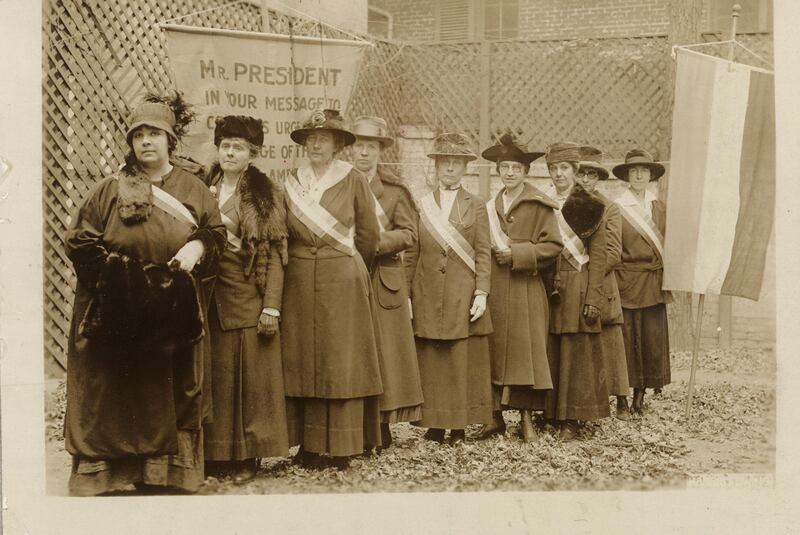Images of events leading to the ratification of the 19th Amendment are familiar to Americans. The word “suffrage” conjures portraits of well-dressed women gathered in front of the White House with “Votes For Women” banners, sashes and pins. But the narrow focus on the 20th century eastern efforts overshadows the monumental impact of the 19th century West.
This year marks a century since the passing of the 19th Amendment, but this week will mark the first female American vote under equal suffrage law — an event that took place in Utah on Feb. 14, 1870.
[Listen to the Deseret News podcast: Zion’s Suffragists]
The historic vote of 23-year-old Seraph Young was both a result of many years of campaigning and a spark that would help ignite the momentum leading to the 1920 constitutional amendment.

Thanks to the efforts of diligent historians and organizations, this part of national history is being reclaimed. The bold, suffrage-colored purple and gold “Utah HERitage” billboards along I-15 are hard to miss, and books, websites and events have popped up in the hopes of spreading the knowledge of Utah’s role in the road to the women’s vote.
Outside the state, though, this crucial part of suffrage history is still predominantly forgotten, or even ignored. This oversight should be corrected.
Utah suffrage influence extended beyond the territory, exemplified by Emmeline B. Wells sending petitions to Washington, D.C., and representing Utah at the 1879 National Woman’s Suffrage Association convention, where she spoke in front of President and first lady Rutherford B. and Lucy Hayes.
To ignore the work of 19th century Western women silences Utah’s long tradition of elevating women and magnifying their voices. Utah not only saw the first women’s vote, but also saw the first female state senator in the country, Martha Hughes Cannon.
Utah’s female leaders continue to rise in number and influence. Notably, half the state’s public colleges and universities are led by women. Female-led philanthropic efforts benefit communities throughout Utah and beyond.
The first female vote and the 19th Amendment are not finales or finish lines. They are important markers in a long journey of elevating women that both precedes and continues past those turning points. Utah has long been a center for providing women with ways to magnify their voices through organization, media and action. That legacy continues today and should not be ignored by those who are uncomfortable with the state’s past or disagree with its current politics.
History without female voices is a tapestry half-woven. Suffrage history without Western voices is even less complete.
History without female voices is a tapestry half-woven. Suffrage history without Western voices is even less complete. The actions of these early suffragists should be included and studied.
Read the stories. Visit the events and exhibits. Doing so continues the West’s tradition of female leaders. Reclaiming this heritage may give young women today the ability to see their leadership potential much earlier.
Research from Brigham Young University suggests that leaders play a large part in girls seeing themselves in those roles. Educating youths that female leaders are a part of this state’s history could shift their visualization of the future. Currently, only a quarter of the state’s legislative seats are held by women — neighboring Nevada boasts a 57% female legislature. Evidently, there is room to do better.
The women of the early West were tough. They were literal trailblazers in their journey to settle a wild part of the country, but were also trailblazers politically and socially. Preserving their works and legacy cements not just their place in history, but their influence on generations to come. It is not enough to simply celebrate their accomplishments — we must strive to emulate them.

